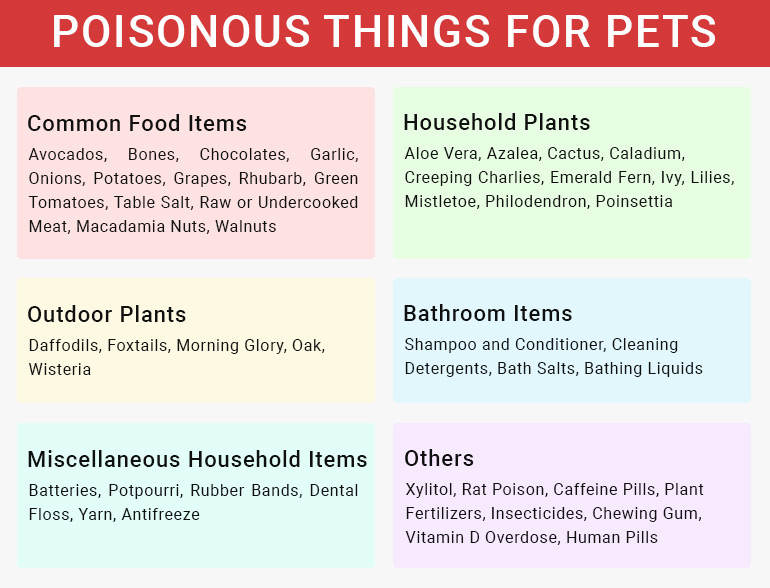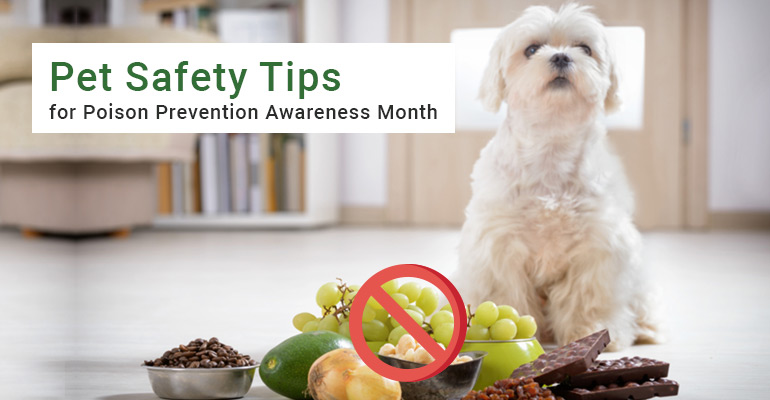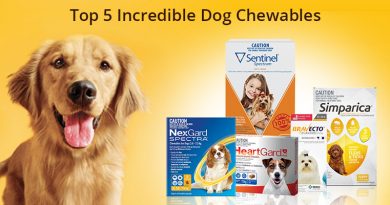Pet Safety Tips for Poison Prevention Awareness Month
ATTENTION PET PARENTS! Every year, the entire month of March is observed as Poison Prevention Awareness Month. The sole purpose of this is to educate pet parents about the things that could be harmful to your pet. Raising awareness about all the poisonous things that could be very fatal to your four-legged friend is very important, and pet parents around the world should be a part of this great cause.
In this blog, we will talk about the safety measures pet parents should be implementing. But first, we’ll list down the many poisonous items that are harmful to your pet’s health as well as see the symptoms associated with it.
Things That Are Poisonous For Your Cat and Dog

Symptoms Of Poisoning In Pets
There are numerous symptoms that depict your pet could be poisoned and needs immediate attention. Here are the symptoms:
- Drooling
- Vomiting
- Pale Gums
- Excessive Urination
- Increased Thirst
- Breathing Difficulties
- Hyperactivity
- Muscle Tremors
- Lethargy
- Seizures
As soon as you spot these symptoms, stay calm and rush your pet to the vet for help.
Safety Measures For Poison Prevention Awareness Month
Now that you know about the poisonous items that could be potentially fatal to your pet’s life, it’s important to know about the safety measures to counteract it. Here’s what you must do to prevent any sort of poison from harming your beloved pet.
#1. Keep Dangerous Food Items Out Of Reach: Food items that are dangerous and poisonous to your pet should be kept far away and out of the reach of your pets. If you have children, then try and keep these food items away from them too. You do not want your child to leave dangerous food items out in the open, or worse, feed it to your pet.
#2. Always Lock Your Bathroom Door: Bathroom supplies are toxic, as seen just a while back. So make sure you lock your bathroom door after every use, especially if you allow your pet to roam around the house. Moreover, if you have kids, teach them to always lock the bathroom door after each use.
#3. Keep Household Plants At Bay: Household plants such as the ones mentioned in the graphic should be kept at bay. Either keep them on window sills or create a protective barrier around them so that your pet cannot get to the plants. Likewise, create protective barriers around the plants in your yard, especially if they are Daffodils, Foxtails, Morning Glory, Oak, or Wisteria.
#4. Other Poisonous Items Should Be Stored Properly: Miscellaneous and other poisonous things like batteries, plant fertilizers, rat poison, etc should be stored in proper and safe places so that your cat and/or dog cannot get to them.
#5. Regular House Inspection: On a regular basis (preferably every weekend), make it a point to do a thorough house inspection. In this way, you will be able to keep all the toxic things away from your pet.
#6. Poison First Aid Kit: Creating a poison first aid kit is a great way to tackle emergency situations. Let’s face it, accidents can happen, and your pet would need your help. In times like those, a first aid kit would perhaps be your first friend. Make sure you have the essential stuff in it, such as a notebook, emergency pet supplies, necessary resources, etc.
#7. Spread Awareness: Last but not least, try and spread awareness among the general public and educate others about the importance of observing Poison Prevention Awareness Month. The internet is a great way of spreading awareness faster, so try and make full use of it.
Poison Prevention Awareness Month is all about raising awareness so that the number of pets that are accidentally or unknowingly poisoned is reduced. With proper awareness such as this dedicated month for raising awareness, the soaring numbers can and will diminish. Fingers crossed.




